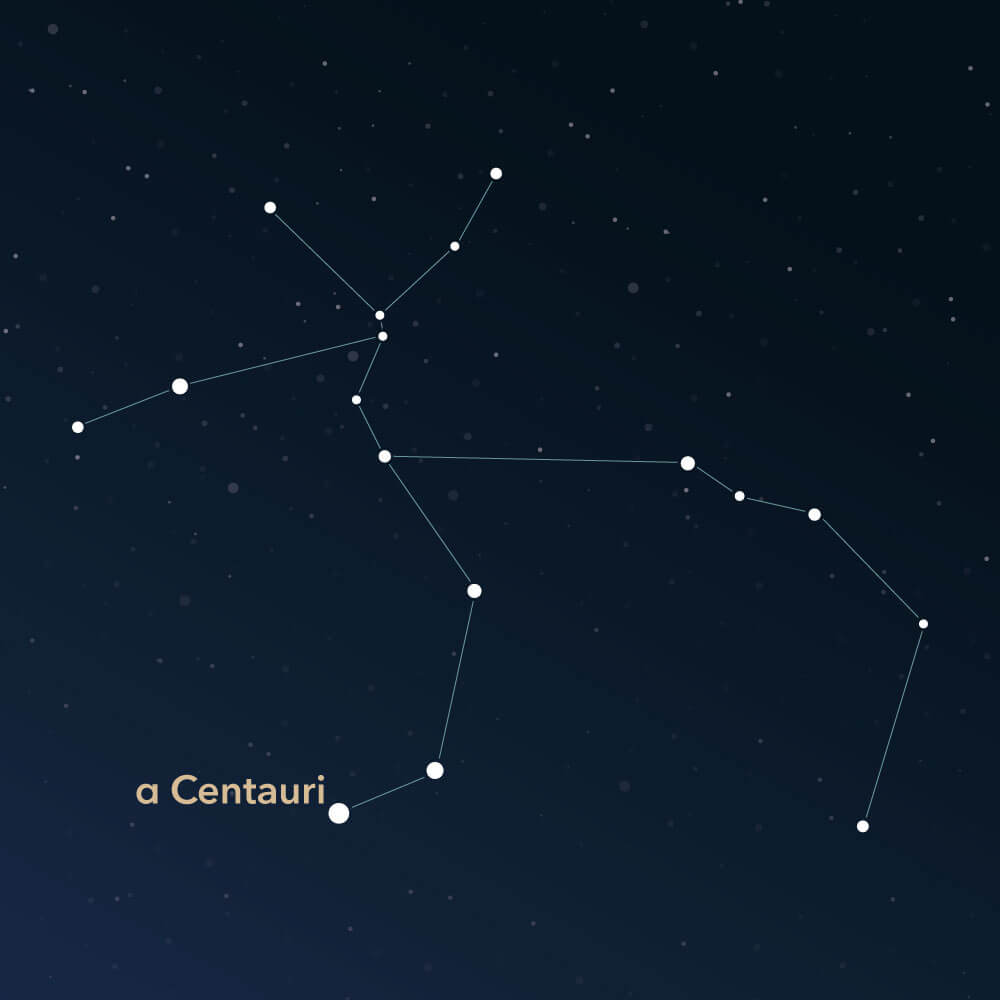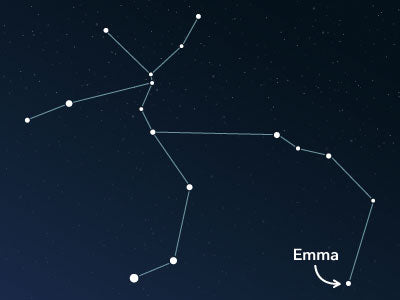The constellation Centaurus
Caractéristiques
- Nom latin
- Centaurus
- Hémisphère
- Hémisphère sud
- Visibilité
- February - May
- Région
- 1060 deg²
- Étoile la plus brillante
- α Centauri (HIP number 71861)
- Spécialités
- Galaxies, open star clusters, globular clusters, planetary nebula, emission nebula

Centaurus represents a Centaur, a Greek mythical creature with an upper body of a human and a lower body of a horse. It is a striking and expansive constellation in the southern celestial sky and is one of the 48 constellations that were mentioned in ancient times by the Roman-Greek astronomer Claudius Ptolemy. In its area are several interesting deep-sky objects.
Hemisphere, visibility, and area
The constellation Centaurus lies in the southern sky and can be seen from anywhere south of the equator. However, on the northern hemisphere, it can only be seen up to the 24th parallel. This corresponds to regions such as the south of Morocco in West Africa or the south of the largest island in the Bahamas.
The best time to watch the constellation is between February and May, with May being particularly good for observation. Centaurus appears with an area of around 1,060 square degrees in the sky. With this size, it ranks 9th among the other 88 constellations.
In sky maps, Centaurus is visualized with a variety of stars, including some bright stars that make the constellation very conspicuous. The brightest star is α Centauri (Alpha Centauri), with an apparent magnitude of roughly 0.1. It is a triple-star system located approximately 4.3 light-years away.
Centaurus is embedded among nine other constellations in the night sky. These include Hydra (commonly known as the water snake), Antlia, Vela, and Carina. The Musca, the striking Crux, Circinus, and Lupus also border the Centaurus. The zodiac constellation Libra lies at one edge.
Specialties in the constellation
In the southern part of Centaurus lies the Milky Way, which contributes to several nebulous objects and many stars. These include open star clusters and globular clusters, as well as galaxies and a planetary nebula. An emission nebula is also located in the area of the sky.
The globular cluster NGC 5139, also known as "Omega Centauri," is particularly interesting. With an apparent magnitude of about 5.3, it is the brightest globular cluster in the night sky. Additionally, with around 10 million stars, it is one of the most massive globular clusters in the Milky Way. It lies approximately 1,500 light-years away and can be perceived as a hazy spot with the naked eye.

Mythology
The constellation of Centaurus represents the wise teacher and mentor of many Greek heroes: Chiron.
In Greek mythology, centaurs were generally considered treacherous and barbaric. However, Chiron was an exception, being the son of the Titan Kronos and Philyra and thus the half-brother of Zeus. Kronos impregnated Philyra in the form of a stallion, resulting in the birth of the mythical creature. The mother was so ashamed that she transformed herself into a tree, leaving Chiron to grow up without her.
Despite this, Chiron later became respected as a teacher and mentor. When Hercules killed some of the centaurs with his poisoned arrows after a dispute, he accidentally hit Chiron as well. Chiron survived the accident but suffered such intense pain from the poison that he begged for release. He gave his immortality to Prometheus and was subsequently placed in the stars as a memorial for all.
PubliéLire d'autres articles intéressants

An overview of all 88 constellations
Learn more about all 88 constellations and read interesting information about the mythology, visibility, and features.

Application Planétarium
Découvrez le ciel nocturne avec notre application de planétarium !
Disponible pour iOS et Android.

Nommez une étoile dans la constellation Centaur
Name a star in a constellation and create something that lasts for eternity.